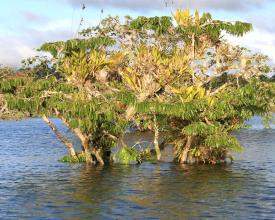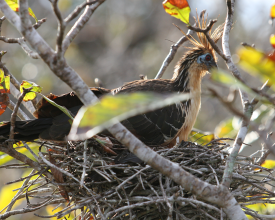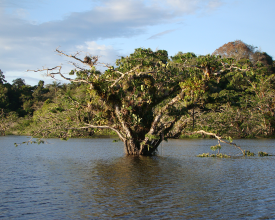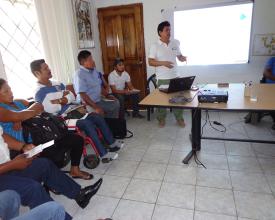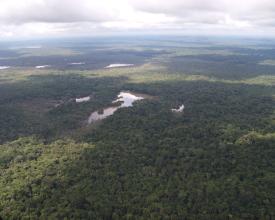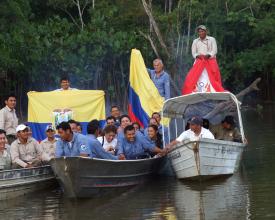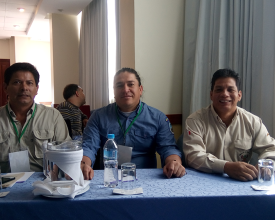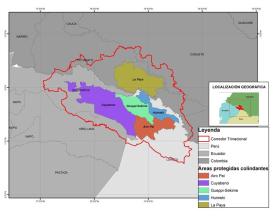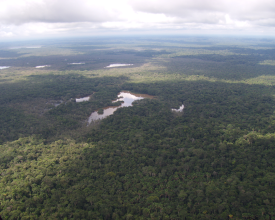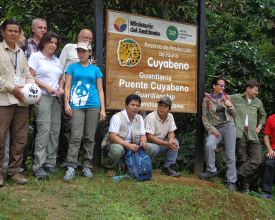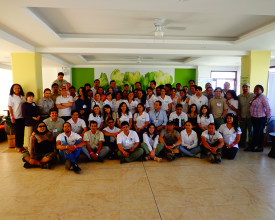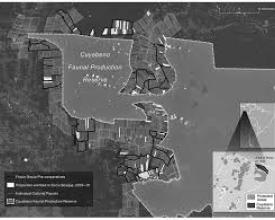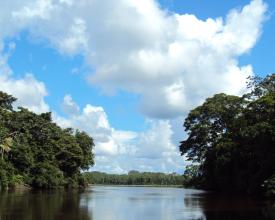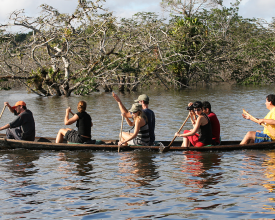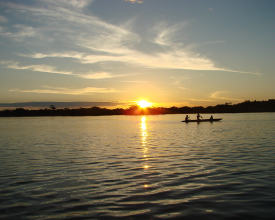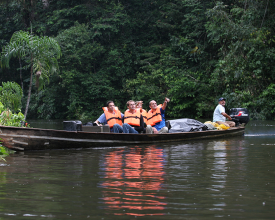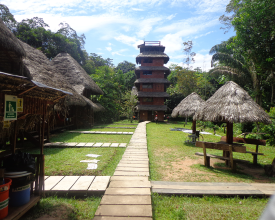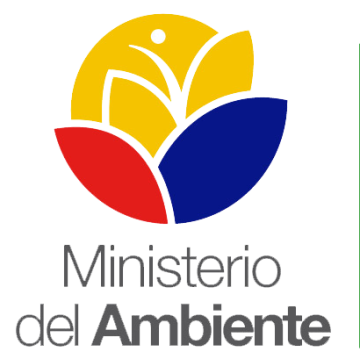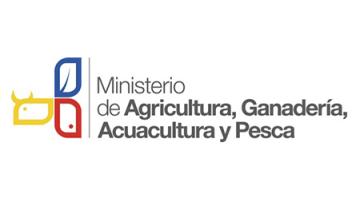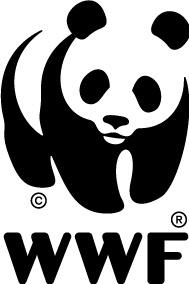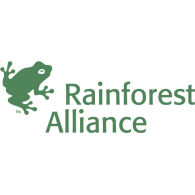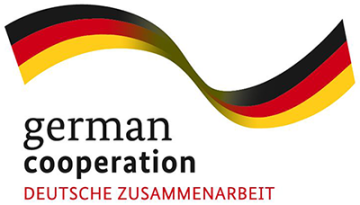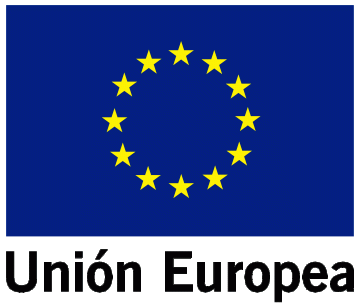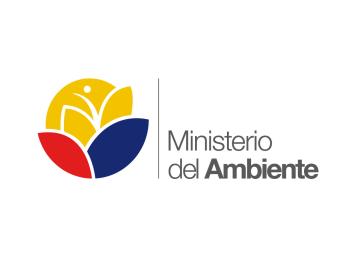
An Example of Governance and Participation of Indigenous People and Nations in The Management of the Cuyabeno Wildlife Reserve, Ecuador

Several factors contributed to the consolidation of the Cuyabeno Wildlife Reserve in Ecuador. One of them was the empowerment of indigenous organizations to establish "Use and Management Agreements" with the State. Besides that, the government defined policies for the conservation of protected areas, such as the Socio Bosque Program, the National Environment Fund, and investments in sustainable tourism. Finally, the availability of funds and technical assistance from international cooperation was key to support an initiative integration across borders (Colombia–Ecuador–Peru).
Context
Challenges addressed
The main threats to conservation in the Cuyabeno Wildlife Reserve are oil extraction activities, timber extraction, illegal hunting, illegal traffic of wild species, agriculture under the monoculture model, the expansion of agricultural areas and colonization.
The increase in tourism is also a challenge to the Reserve, as it is located at an important point of entry for the Lower Amazon, and it contains important natural and cultural values that are exploited for tourism.
In the socio-environmental area, there are eleven indigenous communities of five different nationalities living inside the Reserve, with whom it’s necessary to reach agreements for access to land ownership and sustainable use of natural resourcesin the territory. This is a challenge because the goal is to articulate the vision of territorial conservation and management of these indigenous communities and the State.
Location
Process
Summary of the process
The knowledge blocks presented in this solution have contributed as a whole to improve the administration of the Cuyabeno Wildlife Reserve. The availability of financial resources and technical assistance have improved all aspects of the area. This was achieved thanks to the existence of a National Environmental Fund that is specifically aimed at protected areas, to the strengthening of policies that promote investments in tourism development, to the international cooperation established through a tri-national initiative, and to a national incentive system through the Socio Bosque Program. To these elements, we add the existence of co-management agreements to promote the empowerment and participation of indigenous organizations in the area.
Building Blocks
Co-Management Between Indigenous Communities and the Government
One of the great challenges for the Cuyabeno Wildlife Reserve was the consolidation of its boundaries and securing management agreements with the local populations and indigenous organizations. Under the previous logic of integrating cultural variables in the national preservation process, the project “Delimitation of the lower region, conflict resolution, and awareness of the communities about the resource management and use in the Cuyabeno Wildlife Reserve” was successfully created.
The project main goal was to preserve the biological and cultural integrity of the Reserve under a strong alliance between the MAE and the indigenous communities that inhabit and coexisted in the territory: Siona, Secoya, Cofán, Kicwa, and Shuar.
As a result, in 1995 began the process of establishing Natural Resources Use and Management Agreements with most of the communities in these five indigenous nations. Such efforts promoted local participation and the recognition of the Protected Area for shared management.
The agreements became formal documents that legitimized the communities’ right to live in the Reserve and use the natural resources within under special conditions.
Enabling factors
- Empowering the indigenous organizations to actively participate in the protected area.
- Negotiation strategies between the indigenous organizations and the Government, in order to establish the Use and Management Agreements.
- MAE’s openness to participatory planning processes.
- Promotion of the sustainable use of natural resources within the protected area.
- Acknowledgment by the local communities of the protected area’s relevance: environmental, cultural, social, and economic importance.
Lesson learned
The Use and Management Agreements include the following: Community Management Plans, Operational Plans and a Compliance Monitoring System. The Community Management Plans are valid for ten years and can be renewed.
The Community Management Plans were built as internal agreements by and for the community in accordance with: The regulations for natural resources use in communal spaces issued by the Reserve; The current status of use of such resources; and the rights of the indigenous communities. As a result of the previous, the boundaries of the Protected Area and the communities territories were consolidated.
Furthermore, spaces for discussion have been created in order to deal with convergent and divergent points of view that include the indigenous and governmental visions about the territory, its conservation, and sustainable management.
The co-management of the area between the MAE and indigenous organizations, achieved an important result: The ending of new settler’s arrivals to indigenous territories as well as the colonization/expansion of the local communities into the Reserve.
Governance Beyond Borders
The Amazonian border integration initiative known as the Tri-National Program, was promoted by the Administrators of three protected areas (The La Paya National Park-Colombia, the Cuyabeno Wildlife Reserve-Ecuador, and the Güeppí National Park-Peru), enabling a management optimization under a regionally coordinated model.
It all started in 2005 as a result of the dialogue efforts carried on by the representatives of the three Protected Areas. In 2006 the initiative was consolidated as the Tri-National Program, since then it has continuously been strengthened over time.
The first important decision towards financial support for the initiative, was sought trough an agreement among the environmental funds available in each of the three participating countries. Afterwards, additional financial support was pursued through several projects that could cover the expenses of priority lines such as protected and buffer area’s management, social participation, organizational capacity improvement and the conservation corridor´s enhancement.
In this context, the Goverments united to seek operational, technical and financial mechanisms to ensure the conservation and sustainable development of the Corridor, with the ambition of becoming a successful pilot experience of transboundary management.
Enabling factors
- A shared vision among the three protected areas to solve similar issues in the border region.
- Well defined structure of the Program under specific management guidelines, with a Coordinating Committee (three national authorities representing each of the Protected Areas National Systems) a Technical Committee (Head Managers of the three Protected Areas,) and a Technical Secretariat (rotating headquarters every two years among the three environmental authorities).
- Procurement of technical and financial support from cooperation agencies.
Lesson learned
The program’s institutional background was strengthened thanks to a strong structure comprised of: The Coordinating Committee; The Technical Committee; and, The Technical Secretariat. Furthermore, a Memorandum of Understanding was signed by the parties which provided a clear guideline for the job ahead.
Thanks to the technical and financial support gained, several coordinated actions were carried out to increase the functionality and management capabilities of the three areas. In Cuyabeno, guarding posts were repaired and equipped, and the Monitoring and Vigilance Program was consolidated as part of the Area’s Management Plan; later this was articulated with the park ranger’s work in all three Areas to effectively monitor strategic conservation spots inside the protected areas, buffer zones, and borders.
In regards of social participation for sustainable management, the work was aimed to strengthen the organic coffee and fine aromatic cocoa productivity chain and communitarian tourism innitiatives.
The Protected Areas Fund as a financial sustainability strategy
The creation of a permanent fund to cover management expenses in protected areas, has helped government managed administrations to have an annual budget to cover their main operational activities, such is the case of the Cuyabeno Wildlife Reserve.
This fund is officially known as the Protected Areas Fund (PAF) and was established as part of a 1999 initiative carried on by Ecuador’s Ministry of Environment and the National Environmental Fund, the initiative was also supported by international organizations. The main goal was to diversify financial sources for public-sponsored protected areas and ensure financial resources in the long term.
The National Environmental Fund established in 1996 served as the main precedent to the PAF. It was considered as “an independent financial mechanism available to support plans, programs, projects, and any activity pursuing the protection, preservation, and improvement of the environment and natural resources”. This fund, created as a private organization, administered and channeled financial resources, provided technical counseling, but didn’t participate in the direct implementation of any initiative.
Enabling factors
- National policies established to support the creation of a National Environmental Fund, designed to provide budgetary stability to the Ecuadorian National System of Protected Areas.
- Constant financial support from national and international cooperation agencies to create a trust fund destined to cover the operational and management costs of Governmental Protected Areas, included the Cuyabeno Wildlife Reserve.
Lesson learned
The design and implementation of the PAF were the results of a negotiation process between the Ecuadorian Government, civil society and international agencies.
Its main goal is to provide support and financial stability to the Ecuadorian National Protected Areas System, thus contributing to the in situ conservation of Ecuador’s biodiversity. The PAF is being destined to co-fund basic operational expenses and provide technical support.
After a one-year interruption in 2015, the PAF is currently working with 30 Governmental Protected Areas, including the Cuyabeno Wild Reserve which has an annual budget of USD $56,000 allocated. Even though the FAP is not the only financial mechanism the Reserve has, the annual budget covered by it supports the main operational activities of the Area which are aligned with the strategic goals and results proposed in the annual operational plan.
The Socio Bosque Program a successful incentive and conservation strategy
In 2008, the Government of Ecuador created the Socio Bosque Program (SBP) as a financial incentive mechanism aimed at private landowners, farmers, and indigenous communities, who are voluntarily committed to the conservation and protection of forests and other native ecosystems.
In the Cuyabeno Wildlife Reserve, thanks to the progress in the Natural Resources Use and Management Agreements signed with the indigenous communities living in the area, the delimitation of their territories and to the subscription of land deeds in the buffer area. Land ownership allowed the people to comply with the requirements needed to participate in the PSB.
Currently around 86,000 hectares of the Reserve are part of the SBP, allowing the preservation of an important tract of land including the natural forest in the higher and lower region of the Reserve. At the same time, the program created an economic incentive for the communities and individual landowners interested on implementing productive projects. This was crucial to reduce the risk of the agricultural border advancement towards the Reserve.
Enabling factors
- National incentive policies to support preservation and sustainable development of forests, and their application with communal landowners living inside the protected areas.
- Promotion and awareness of the SBP benefits to various actors and stakeholders.
- Indigenous and farming communities interested on entering the SBP.
- Economic incentives that motivate local actors and stakeholders to conserve and protect the forest located in the boundaries and inside the Reserve.
Lesson learned
The implementation of the SBP in the Cuyabeno Wildlife Reserve is a mechanism designed to motivate several indigenous communities to preserve the forest. Therefore, it was necessary to inform the indigenous communities living in the Reserve (the Cofán community of Zábalo, the Kicwa community of Zancudo, and the Shuar communities of Taekiwa and Charap) about the benefits of participating in this governmental program.
It was also fundamental the support provided by the Protected Area Administration and the PSB to the communities, helping them gather information, organize their community meetings, and create and follow up their investment plans.
The results: they became the first communities living inside a Protected Area and particularly within the SBP, leading the way for other communities in similar conditions to follow them and participate in the future. This contributed to a notable improvement in the living conditions of the inhabitants and communities, diminishing the pressure on natural resources in the process.
Sustainable tourism management
The high level of cultural and biological diversity of the Cuyabeno Wildlife Reserve attracts thousands of local and international tourists every year. It’s important to mention that the Reserve’s main natural attraction is a floodable lake system.
In the last years, the flux of tourists increased after the Government issued a National Decree in 2012 that eliminated any entrance cost to access any protected area in the country.
Another important factor was the investment done by the Government and some international cooperation agencies, to improve tourism planning and public infrastructure in the Cuyabeno Reserve, which reflected in better services for the Area’s visitors.
Also, the Ecuadorian Ministries of Environment and Tourism regulated the tourism activities inside the protected area, licensing tourism operators and developing actions to promote good practices linked to sustainable tourism.
The actions carried by both institutions in the last years, for example, promoted the design and implementation of management standards for sustainable tourism and an income increase for local communities.
Enabling factors
- High levels of local and international tourism visitation in the protected area.
- The creation of national policies to procure more investment in tourism development.
- Prioritization of investments in tourism infrastructure.
Lesson learned
The improvement in public infrastructure and tourism regulation activities in the protected area were key in to promote sustainable tourism and its development.
Based on the tool: Destiny Management Methodologies for Natural Protected Areas, the Cuyabeno Wildlife Reserve developed a Visitor's Management Plan.
The Rainforest Alliance supported the creation of the Cuyabeno’s Tourism Manual for Procedures, therefore establishing the guidelines for tourism activities within the Reserve.
Another equally important milestone was the inclusion of the communities in sustainable tourism activities, mainly as service providers, acting as local guides and navigation providers, this permitted communitarian tourism to be a good alternative source of income.
All this contributed to create tourism activities in the Cuyabeno Wildlife Reserve which was later reflected in a framework matrix of economic, social, and environmental sustainability.
The Reserve reached 6,620 visitors during the first semester of 2017.
Impacts
- The Natural Resources Use and Management Agreements allowed to trace boundaries for the indigenous population territory, establish the limits of the protected area, and promote the legitimization of the indigenous population rights to live in the Reserve and use their natural resources under special conditions.
- Government policies at a national level, along with technical and financial support from the Tri-National Program helped strengthen operations and management of the area, with improvements in infrastructure, increased effectiveness of the control and surveillance program, strengthening of sustainable tourism, and of the productive chains in the buffer zone.
- The increase in local participation through the Use and Management Agreements celebrated between the communities and the authorities, the inclusion of indigenous communities in the Socio Bosque Program for conservation incentives (promoted by the Government of Ecuador,) and the involvement of indigenous communities in tourism activities have allowed for a sustained co-management within the protected área, in accordance with the use regulations for natural resources within communal spaces of the Reserve.
- The involvement of the local population in several initiatives has contributed to an improvement of the living conditions of their members.
Beneficiaries
11 indigenous communities of 5 nationalities: Siona, Secoya, Cofan, Kichwa and Shuar. An indigenous population of approximately 600 people within the reserve, and a peasant population of 8,120 inhabitants within the area of influence.
Sustainable Development Goals
Story
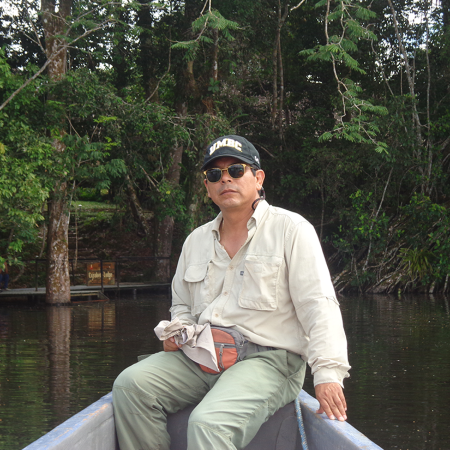
“The Cuyabeno Reserve had what I call a consolidation process from the inside of the protected area out. It began with the delimitation of the indigenous territories inside the protected area and the establishment of the boundaries of the Reserve. After that, several processes of area management strengthening have occurred, with the addition of several strategic allies.
Thus, this consolidation began with the communities inhabiting the lower region of the protected area. As a result of the negotiation processes and signature of the first Natural Resources Use and Management Agreements in 1995, these communities began defining the boundaries of their territories and started to be part of the Reserve co-management.
At the same time the expansion of the protected area began. At first, it occupied 250 thousand hectares, it later grew to 650 thousand hectares, and after a process of rectification of its limits, an area of 590,112 hectares is finally established, as is stated in the 2012 Management Plan.
After this step, the physical delimitation of the area was done and the attempts to consolidate the upper region boundaries began. Three activities were done for this purpose: resolution of land ownership conflicts within the Reserve, issuing deeds in the Forest Heritage within the outer area of the Reserve, and the control and surveillance of the area with the support of local communities.
At this point the development of the Tri-National Program initiative began, first through conversations between the heads of border protected areas in Ecuador, Peru, and Colombia, and from that on, in a meeting in Leguízamo, Colombia, where the problems of the region, their environmental, social, and cultural wealth, and the importance of guaranteeing their preservation were discussed. During the conversations, it became evident that the three areas had very similar situations and problems, which derived in the possibility of creating a mega-reserve integrated by the three protected areas. This proposal was later introduced in a workshop celebrated in Leticia, Colombia, gathering support from many international organizations to consolidate the Tri-National Program.”


